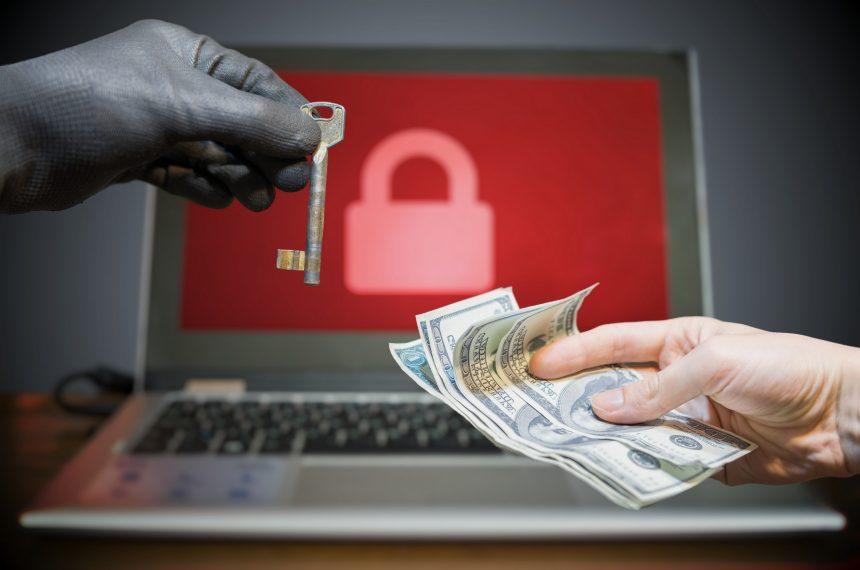Ransomware is a form of malicious software (malware) that encrypts files on a victim’s computer, rendering them inaccessible until a ransom is paid to the attackers. This type of malware is particularly nefarious because it not only steals data but also extorts money from individuals or organizations, exploiting the urgency and fear associated with data loss. With ransomware attacks on the rise, understanding how these threats operate and what steps can be taken for prevention and removal is crucial for all computer users.
The Concrete Threat: Solution Ransomware
One specific variant of ransomware that has gained notoriety is Solution Ransomware. This malware typically infiltrates a system through malicious email attachments, infected software downloads, or deceptive ads on websites. Once executed, it quickly encrypts files on the user’s device, effectively locking them out of important documents, photos, and other data.
Upon installation, Solution Ransomware performs a series of actions designed to maximize its impact. First, it scans the user’s hard drive for common file types, including documents, images, and databases. Then, it encrypts these files using a robust encryption algorithm, changing their extensions to something unusual (for example, files may be renamed with a .sol extension). The attackers then leave a ransom note on the infected system, outlining the steps the victim must take to pay the ransom and restore their files.
The consequences of Solution Ransomware can be dire. Not only does it result in significant data loss, but the ransom payment does not guarantee the recovery of the files. Victims may find themselves without access to vital information and at risk of further attacks if they do not take appropriate steps to secure their systems.
The Ransom Note
After encrypting files, Solution Ransomware typically generates a ransom note, which may be displayed as a pop-up message or a text file saved on the desktop. This note usually includes:
- A warning that the user’s files have been encrypted.
- Instructions on how to pay the ransom (often demanded in cryptocurrency for anonymity).
- A deadline by which the ransom must be paid to prevent permanent loss of data.
- Threats of deleting the decryption key if the victim does not comply.
The ransom note aims to instill fear and urgency, pushing the victim toward making a hasty decision to pay the ransom.
Text presented in this message:
YOUR PERSONAL ID:
–
/!\ DEAR MANAGMENT, YOUR COMPANY NETWORK HAS BEEN PENETRATED /!\
All your important files have been encrypted!
The best and only thing you can do is to contact us to settle the matter before any losses occurs.
Your files are safe! Only modified. (RSA+AES)
ANY ATTEMPT TO RESTORE YOUR FILES WITH THIRD-PARTY SOFTWARE
WILL PERMANENTLY CORRUPT IT.
DO NOT MODIFY ENCRYPTED FILES.
DO NOT RENAME ENCRYPTED FILES.
No software available on internet can help you. We are the only ones able to
solve your problem.
We gathered highly confidential/personal data. These data are currently stored on
a private server. This server will be immediately destroyed after your payment.
If you decide to not pay, we will release your data to public or re-seller.
So you can expect your data to be publicly available in the near future.
We only seek money and our goal is not to damage your reputation or prevent
your business from running.
You will can send us 2-3 non-important files and we will decrypt it for free
to prove we are able to give your files back.
Contact us for price and get decryption software.
EMAILS:
wehavesolution@onionmail.org
solution247days@outlook.com
* To contact us, create a new free email account on the site: protonmail.com
IF YOU DON’T CONTACT US WITHIN 72 HOURS, PRICE WILL BE HIGHER.
Purpose and Infiltration Methods
The primary purpose of ransomware like Solution Ransomware is to extort money from victims by threatening to permanently lock them out of their files. It typically infiltrates systems through phishing emails, malicious links, or software vulnerabilities. Once installed, the threat poses significant risks to the infected system, including loss of data, potential exposure of personal information, and financial harm from ransom payments.
Symptoms of Solution Ransomware Infection
Victims of Solution Ransomware may notice several symptoms, including:
- Inability to open certain files or applications.
- Unusual file extensions on documents (e.g.,
.sol). - The appearance of a ransom note on the desktop.
- Slower system performance or unexpected behavior.
Detection Names
To determine if your computer is infected with Solution Ransomware, look for the following detection names, which may appear in your antivirus software or during a malware scan:
- Solution
- SolRansom
- Encryptor
- CryptoVirus
Similar Threats
Other similar ransomware threats include:
- Cerber Ransomware: Known for its sophisticated encryption methods and demand for payment in cryptocurrency.
- Locky Ransomware: Disguised as an invoice or document, it encrypts files and demands ransom.
- WannaCry: This infamous ransomware exploited a vulnerability in Windows to spread rapidly across networks.
Removal Guide for Solution Ransomware
If you suspect that your system is infected with Solution Ransomware, follow these steps to remove the malware:
- Isolate the Infected Device: Disconnect your computer from the internet to prevent further damage and spreading the infection.
- Enter Safe Mode:
- Restart your computer.
- As it starts, repeatedly press the F8 key (or the key specific to your device) to enter the Advanced Boot Options menu.
- Select “Safe Mode with Networking.”
- Use Anti-Malware Software:
- Download and install a reputable anti-malware tool, such as SpyHunter.
- Run a full system scan. SpyHunter can help detect and remove ransomware effectively.
- Delete Suspicious Files:
- Navigate to the following directories:
C:\Program FilesC:\ProgramDataC:\Users\[Your Username]\AppData
- Look for any unfamiliar programs or files that may be linked to the ransomware. Delete these files.
- Navigate to the following directories:
- Restore Encrypted Files:
- If you have backups of your files, restore them after ensuring that your system is clean.
- For files without backups, you may try using file recovery software, but success is not guaranteed.
- Update Software and Security Measures:
- Ensure your operating system and software are up-to-date.
- Use a firewall and keep your antivirus software active.
Preventing Future Infections
To minimize the risk of future ransomware infections:
- Regularly Back Up Your Data: Keep backups on external drives or cloud storage that are not continuously connected to your computer.
- Be Wary of Emails: Avoid clicking on suspicious links or downloading attachments from unknown senders.
- Install Security Software: Use reputable antivirus and anti-malware tools to protect your system.
- Educate Yourself and Others: Stay informed about the latest security threats and educate those around you about safe computing practices.
Conclusion
Ransomware, particularly variants like Solution Ransomware, poses a significant threat to individual and organizational data security. By understanding its operation and implementing preventive measures, users can protect themselves from falling victim to these malicious attacks. To enhance your defenses, consider downloading SpyHunter today and perform a free scan to identify any threats on your system.
If you are still having trouble, consider contacting remote technical support options.





